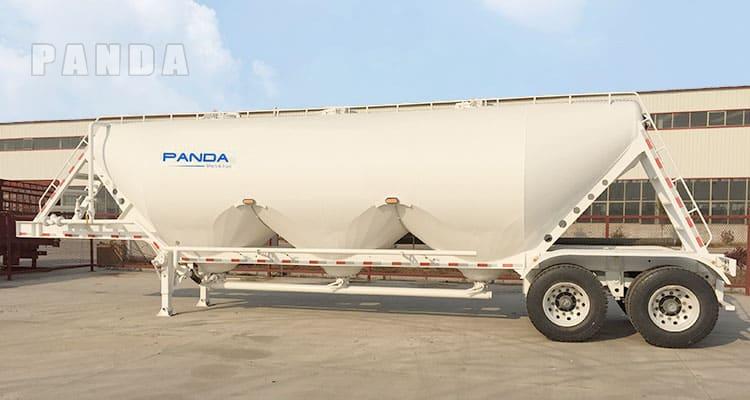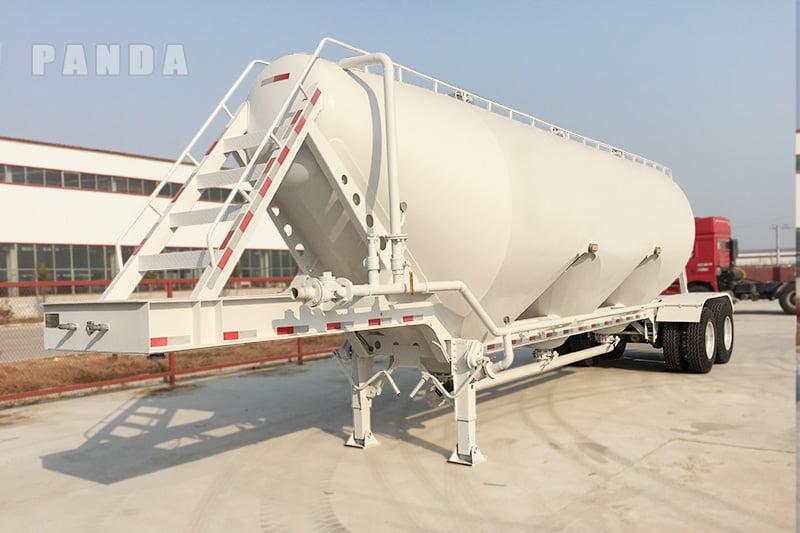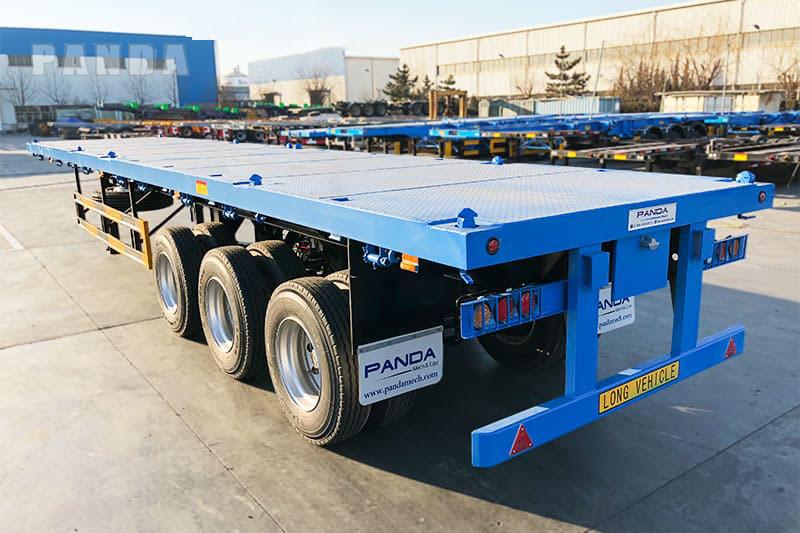Have you ever wondered, “What is a Pneumatic Trailer?” and how materials like cement, flour, or sand are transported in bulk without spills or contamination? That’s where pneumatic trailers, also known as bulker trucks, come into play. A pneumatic trailer is a specialized vehicle designed to safely and efficiently transport dry materials. These trailers utilize air pressure to load and unload powders or small grains, streamlining the process and saving time.

Why are they so widely used? For starters, they can carry larger quantities in a single trip, reducing transportation costs. Additionally, their sealed design ensures that materials remain clean and secure.
What is a Pneumatic Trailer?
Let’s make it simple. A pneumatic trailer, also called a dry bulk trailer, is a special truck for moving dry materials like powders or grains. These trailers have a closed system that uses air pressure to load and unload. This setup makes the process fast, clean, and safe. You’ll often find them in industries like building, food production, and chemical factories.
Why are pneumatic tank trailers special? They can move materials without getting them dirty. For example, they’re great for carrying cement, flour, or plastic pellets. The sealed compartments keep everything safe, and the air system helps unload smoothly. From construction sites to food factories, these trailers are super useful.
Key Features of Pneumatic Tank Trailers
The features of pneumatic tank trailers make them stand out. Here’s what makes them work so well:
- Dry Bulk Pneumatic Trailers: Made for things like cement and flour. Their closed system stops contamination, perfect for delicate materials.
- Food Grade Pneumatic Trailers: Follow strict cleanliness rules. They safely carry food items like sugar and flour.
- Plastic Pellet Pneumatic Trailers: Designed for plastics, they protect plastic pellets during transport.
- Chemical Pneumatic Trailers: Built for dangerous chemicals, they have extra safety features. Drivers need special training to use them.
- Portable Pneumatic Trailers: Smaller and easy to move. Often used in building projects or clean-up jobs.
Each type of pneumatic tank trailer has a specific job. Food-grade trailers focus on cleanliness, while chemical trailers are all about safety. This flexibility makes them popular in many industries.
Pro Tip: Pick the right pneumatic tank trailer based on what you’re moving. Always check the features that fit your needs.
Pneumatic tank trailers are more than just trucks. They’re a smart way to move materials safely and quickly. Whether you work in construction, food, or manufacturing, these trailers can help a lot.
How Does a Pneumatic Trailer Work?
Understanding how a pneumatic trailer works might seem hard, but it’s simple. Let’s break it into easy steps.

Design and Components
Tank structure and compartments
The tank is the main part of a pneumatic trailer. It holds dry materials like cement, flour, or sand. These tanks are made from aluminum or steel. This makes them strong but not too heavy. Inside, the tank has separate compartments. These keep the materials steady while moving. They also allow carrying different materials in one trip.
The compartments are sealed tightly to stop contamination. This is very important for food items like sugar or flour. The sealed design also prevents spills, keeping the area clean and safe.
Valves, hoses, and air compressor system
Now, let’s talk about the valves, hoses, and air compressor. These parts work together to move materials. The air compressor is like the system’s engine. It creates pressurized air to load and unload materials.
Hoses connect the tank to loading and unloading spots. They are strong and flexible to handle pressure. Valves control the material flow, acting like gates that open and close. These parts make the process smooth and easy.
How to load powder and granular materials onto a pneumatic trailer?
Loading materials is all about accuracy. First, the trailer is placed under a silo or hopper. Hoses connect the loading point to the trailer. Once secure, the air compressor starts. It creates a vacuum to pull materials into the tank.
This method is quick and keeps materials clean. There’s no contamination because the system is sealed. Whether it’s cement, flour, or plastic pellets, the process is the same. Air pressure does the heavy work.
How to unload powder and granular materials onto a pneumatic trailer?
Unloading is as easy as loading. The air compressor is important here too. It creates pressurized air to push materials out of the tank. The materials move through hoses into storage areas.

This method is cleaner and faster than older ways. For example, unloading cement or sand doesn’t create dust. Everything stays inside the system. This is why pneumatic trailers are popular in industries like construction and food. They make loading and unloading simple while keeping materials safe and clean.
Did you know? Pneumatic trailers are made to carry powdery materials like flour, cement, and sand. Their air system improves cleanliness and speed, making them a favorite in many industries.
Common Uses of Pneumatic Trailers
Pneumatic trailers are super useful and can do many jobs. They help move dry materials for different industries. Let’s look at what they carry and why they’re important.
Types of Materials Transported
Cement and construction materials
Cement is a key material for building. Without it, construction would stop. Pneumatic trailers carry cement in large amounts without spilling. Their sealed tanks keep the cement dry and clean. They also transport other heavy materials like lime and fly ash. These trailers make construction faster and easier.
Food-grade materials like flour
Food safety matters a lot. Pneumatic trailers are great for moving food items like flour. They follow strict cleanliness rules to keep food safe. Their sealed compartments stop contamination. Bakeries and candy factories rely on them for quick and safe delivery.
Pneumatic Tank Trailers Application
Pneumatic tank trailers are super useful and very flexible. They work in many industries, showing how helpful they are. Think of them as the all-in-one tool for moving materials. Let’s explore how they’re commonly used.
These trailers can handle jobs in construction, food, and farming. They adjust to different needs and always perform well. Here’s a simple table to explain their uses:
| Type of Pneumatic Trailer | Industry Uses | Key Features |
|---|---|---|
| Dry Bulk Pneumatic Trailers | Building, Factories | Closed system stops contamination, quick loading/unloading. |
| Food Grade Pneumatic Trailers | Food Industry | Clean design, easy to wash, keeps food safe. |
| Plastic Pellet Pneumatic Trailers | Plastic Making | Smooth inside walls, gentle with light materials. |
| Chemical Pneumatic Trailers | Medicine, Farming | Handles dangerous items, safety features stop leaks. |
| Portable Pneumatic Trailers | Building, Cleanup Jobs | Small size, easy to move, works in tight spaces. |
Why are these trailers so great? First, they make loading and unloading fast. Air pressure moves materials quickly, saving time. Second, their sealed design keeps everything clean and safe. This is super important for food trailers to avoid contamination. Third, they can carry many types of materials, from grains to chemicals.
More industries are using these trailers now, like farming and factories. Why? They’re reliable, save time, and are better for the environment. New designs even help reduce waste and pollution. It’s cool to see how they’re improving to meet today’s needs.
Here’s why pneumatic tank trailers are special:
- Fast Loading and Unloading: They move materials quickly, saving time.
- Clean and Safe: The sealed system keeps materials uncontaminated.
- Multi-Purpose: They can carry food, chemicals, and more.
In summary, pneumatic tank trailers are key for moving dry materials. They’re not just machines; they’re smart tools that make work easier and safer. Whether it’s for building, food, or farming, these trailers are a big help.
Advantages of Pneumatic Trailers
Efficiency in Material Handling
Why are pneumatic tank trailers so effective? They use air pressure to quickly load and unload materials. This saves time and cuts down on labor costs. Imagine unloading a full tank of cement in just minutes. That’s the kind of speed they offer.
The sealed design keeps materials clean during transport. There are no spills or contamination, just clean, high-quality materials delivered safely. Whether it’s for construction or food products, these trailers handle everything with ease.
New technology has made these trailers even better. Improved air systems make them more reliable and efficient. They also use less energy, which lowers costs over time. It’s a smart choice for businesses wanting to save money and work faster.
Quick Tip: For fast and clean material transport, pneumatic trailers are the best option.
Safety and Cleanliness
Safety and cleanliness are very important, especially for food or chemicals. Pneumatic tank trailers meet strict hygiene rules. Food-grade trailers are made with materials that are easy to clean. This keeps products like sugar and flour safe during transport.
These trailers also have advanced safety features. Better brakes and suspension protect both the cargo and the driver. This is crucial when moving dangerous materials like chemicals. The sealed compartments prevent leaks and spills, keeping everything secure.
Did you know? Industries like food and medicine rely on pneumatic trailers for their clean and safe design.
Versatility
One of the best things about pneumatic trailers is their flexibility. They can carry many materials, like cement, sand, food, and plastic pellets. This makes them useful for many industries.
Different trailers are made for specific jobs. Food-grade trailers focus on cleanliness, while chemical trailers are built for safety. Portable trailers are great for small spaces, like construction sites or cleanup jobs.
Here’s a simple table showing their versatility:
| Type of Pneumatic Trailer | Uses | Key Features |
|---|---|---|
| Dry Bulk Pneumatic Trailers | Construction, factories | Sealed system, fast loading/unloading, prevents contamination |
| Food Grade Pneumatic Trailers | Moving food items like sugar and grains | Easy to clean, follows hygiene rules, stops contamination |
| Plastic Pellet Pneumatic Trailers | Plastics industry, carrying small plastic pellets | Smooth inside walls, gentle air systems for handling |
| Chemical Pneumatic Trailers | Transporting dangerous chemicals in powder or granular form | Strong materials, safety features, needs trained operators |
| Portable Pneumatic Trailers | Construction sites, cleanup projects | Small size, easy to move, works like larger trailers |
This flexibility is why pneumatic trailers are so popular. They adjust to different needs and always perform well. Whether it’s for building, food, or manufacturing, there’s a trailer for every job.
Types of Pneumatic Trailers
Not all pneumatic trailers are the same. Different designs work for different jobs. Two popular types are V type and W-shape pneumatic trailers. Let’s see what makes them special.
V type Pneumatic Trailers
The V type trailer has a simple design. Its tank is shaped like a “V.” This shape helps materials slide down easily during unloading. Gravity does most of the work, making the process quick and smooth.
These trailers are great for heavy materials like cement or sand. The V shape stops materials from getting stuck inside. They’re also easy to clean, which is helpful when switching between loads.
V type trailers are easy to use and maintain. They’re a good choice for construction or industrial work. If you want something reliable, this design is a smart pick.
Pro Tip: A steeper V angle means faster unloading. This can save time on your projects.
W-shape Pneumatic Trailers
W-shape trailers are more advanced. Their tanks have a “W” design, creating separate compartments. This is perfect for carrying different materials in one trip, like cement and fly ash, without mixing them.
The W shape also makes the trailer more stable. The compartments spread the weight evenly. This helps when driving on bumpy roads or traveling long distances.
Another benefit? The W-shape design leaves less leftover material after unloading. The compartments are angled to make sure almost everything comes out. This saves time and reduces waste.
Did you know? W-shape trailers are often used for precise jobs, like food or chemical transport.
Both V type and W-shape trailers have unique benefits. Your choice depends on what you’re moving and where you’re going. Whether you need simplicity or flexibility, there’s a trailer for you.
Maintenance and Care for Pneumatic Trailers
Taking care of a pneumatic trailer is more than just cleaning it. It helps the trailer work well, last longer, and stay safe. Let’s go over the key steps to keep it in good shape.
Regular Inspections
Think of inspections as a check-up for your trailer. They help find small issues before they become big problems. Here’s what you should always check:
- Structural Integrity: Look for rust, cracks, or damage on the tank and frame.
- Wheels and Tires: Check if tires are inflated and have enough tread.
- Braking System: Inspect brake pads, drums, and lines for wear or leaks.
Also, check the suspension and undercarriage. The trailer should sit evenly when empty. Look at hoses and connections for cracks or leaks. These checks can prevent expensive repairs later.
Quick Tip: Inspect the kingpin, landing gear, and air springs weekly to avoid sudden breakdowns.
Cleaning and Hygiene
Cleaning your trailer isn’t just about looks. It’s important for safety, especially when carrying food or chemicals. Cleaning after every load stops contamination and keeps things running smoothly.
- Use filters to remove dirt from the air supply. This keeps products clean.
- Wash the tank inside, especially after carrying food items like sugar or flour.
- For chemical trailers, follow strict cleaning rules to remove leftover materials.
Clean trailers are safer for food transport. They keep materials like flour or sugar free from contamination.
Did you know? Proper cleaning and hygienic designs lower contamination risks in food-grade trailers.
Preventative Maintenance
Preventative maintenance means fixing small issues before they get worse. It’s like giving your trailer extra care to keep it working well. Here’s what to do:
- Lubricate the fifth wheel and check for loose bolts or rust.
- Drain water from air reservoirs to stop moisture buildup.
- Look at air springs and airlines for damage or wear.
- Check wires for damage and make sure connections are secure.
These steps don’t take long but make a big difference. They reduce downtime and keep your trailer working efficiently.
Pro Tip: A weekly maintenance schedule can help your trailer last longer and save money.
Taking care of a pneumatic trailer might seem like a lot, but it’s worth it. Regular checks, cleaning, and maintenance keep it safe and reliable. Plus, it saves money on repairs and prevents delays. A little effort now goes a long way!
Pneumatic trailers are a big help for moving dry materials. They work fast, are flexible, and keep materials clean and safe. From cement for building to sugar for food, these trailers do it all easily.
The need for smarter and faster transport makes pneumatic trailers important. They save time, cut costs, and keep things safe. If you need a dependable way to move materials, these trailers are a great choice.
FAQ
A pneumatic trailer moves dry materials like cement, flour, or sand. It uses air pressure to load and unload quickly, keeping everything clean and safe.
Yes, some trailers, like W-shape ones, have separate sections. These let you transport items like cement and fly ash without mixing them.
Yes! Food-grade trailers are made to meet hygiene rules. They safely carry food items like sugar and flour without contamination.
Construction, food, and manufacturing industries use them a lot. They’re perfect for moving cement, sand, and plastic pellets.
Check hoses, valves, and the air compressor often. Clean the tank after every load, especially for food or chemicals, to keep it in good shape.
Yes, newer trailers use lighter materials and energy-saving systems. This lowers fuel use and helps the environment.



